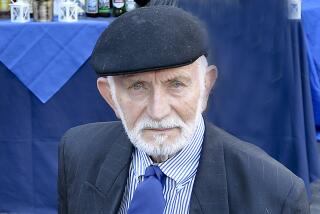New York Course Comes Up Short, Salazar Loses Record
- Share via
NEW YORK — As if things weren’t tough enough for Alberto Salazar, he recently was informed that his 2:08:13 time in the 1981 New York City Marathon would not be accepted as the American record. The reason: The course was found to be shorter than the prescribed 26 miles and 385 yards when it was remeasured for record validation last month.
“Based on what everyone’s told me,” said Bob Hersh, chairman of The Athletics Congress records committee, “I’m no longer going to carry that mark as a pending record.”
Salazar, who will remain the American record-holder (2:08:52) but would lose credit for what had been history’s fastest marathon until last October, reacted with a mixture of anger and amusement. New York Marathon officials reacted with anger, arguing that the remeasurement was conducted using stricter standards not applicable until after 1981. The remeasurement found the course nearly 170 yards short, well over the 92-yard margin of error allowed then.
“I understand they measured over sewers and scraped up against the curb, but I ran in the middle of the road,” said Salazar, who faces knee surgery that would prolong his two-year slump. “I’m not concerned about it. I’ve got more important things to worry about than whether a course is found accurate using guidelines that did not exist at the time I ran the race.”
New York Marathon officials maintain that the 1981 course had been certified by TAC as accurate using the loosely defined practice of measuring along the natural curvature of the road. It wasn’t until the following year, they say, that new guidelines mandated that courses be measured along the shortest possible tangents to take into account that most runners prudently cut corners.
When the course was lengthened by more than 100 yards in 1982 to reflect those stricter standards, race officials announced that videotapes showed Salazar actually had run the proper distance the previous October. When they remeasured the course two weeks ago, however, trying to retrace Salazar’s steps, they still came up short--by more than 50 yards.
So the National Running Data Center, which is empowered by TAC to validate U.S. road-racing marks and commissioned the remeasurement, is compiling evidence against the 2:08:13 mark. That time was considered the “world best” (in the absence of officially sanctioned world records) until Britain’s Steve Jones clocked 2:08:05 on a slightly long Chicago course last October.
Assuming Salazar’s mark is not ratified by TAC, the sport’s national governing body, then the American record reverts to his already-accepted 2:08:52 from 1982 on a Boston Marathon course found accurate within one meter.
More to Read
Go beyond the scoreboard
Get the latest on L.A.'s teams in the daily Sports Report newsletter.
You may occasionally receive promotional content from the Los Angeles Times.










